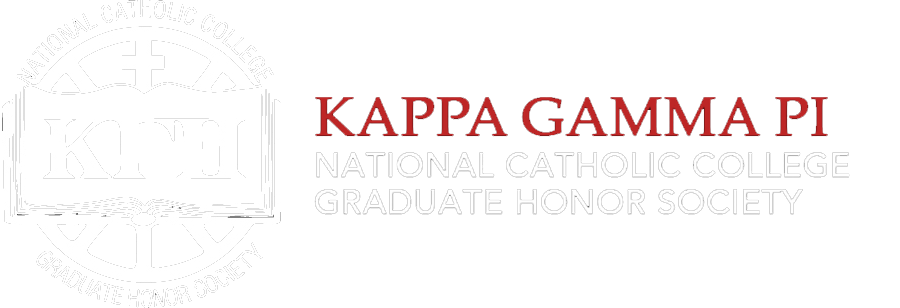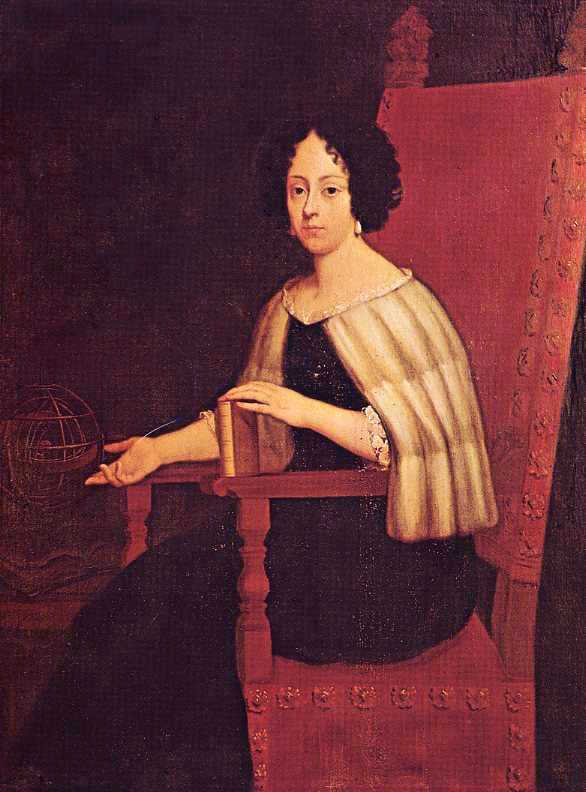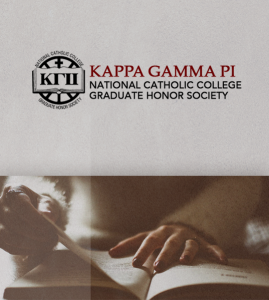Seventeenth Century Model For Today’s Kappa
Each year since 1985, Kappa Gamma Pi has awarded one or more Cornaro scholarships for graduate studies. Because eligibility is limited to Kappa Gamma Pi members, all of whom are honors graduates, the quality of the recipients is exceptional. The Cornaro scholarship is competitive and is based on a number of criteria, specifically how the recipient’s life reflects the Kappa Gamma Pi motto of Faith and Service. Recipients of the Cornaro scholarship encompass the values of volunteer work, leadership experience, high academic standards and solid career aspirations. The scholarship program is supported by donations made by Kappa members and friends.
The Cornaro Scholarship derives its name from Elena Lucrezia Cornaro Piscopia, the first woman in the world to receive a university degree of any kind! Elena Cornaro, a member of a noble Venetian family, received the degree of Doctor of Philosophy in 1678 from the University of Padua, Italy. It was an accomplishment unparalleled for the time.
As the National Catholic College Graduate Honor Society, Kappa Gamma Pi cherishes the accomplishments of Elena Lucrezia Cornaro Piscopia and is proud to have named the Scholarship for Graduate Studies in her honor!
Elena Cornaro led an illustrious life, but after her death, in time, her fame was forgotten. Then, in 1895, an English abbess came upon her grave and discovered the fascinating history of Elena, the Cornaro, seventeenth century model for today’s Kappa.
It has been over 100 years since Elena Lucrezia Cornaro Piscopia was rediscovered, but her name and love of learning live on among the members of Kappa Gamma Pi. Kappa Gamma Pi played an invaluable role in reintroducing this woman of letters to the Graduate Honor Society world during an international celebration in Italy in 1978. In 1973, Kappa Gamma Pi was asked to participate in national planning meetings in Italy for celebrating the 300th anniversary of Elena’s graduation as the first woman ever to attain a doctoral degree.
Kappa’s link with this Italian woman scholar followed a rather circuitous route. It began in 1895 with the discovery of a broken gravestone on a long-forgotten grave at the Basilica of St. Justina in Venice. Here, Elena had been buried at her request among the Benedictine monks with whom she had worked as an Oblate. The abbess who discovered the grave arranged for the replacement of the broken stone. She recorded this finding in a journal, and, as a result of the publicity, a statue of Elena Cornaro was erected at the University of Padua.
In 1905, an English firm depicted Elena as the central figure in a stained-glass window designed for the Thompson Memorial Library of Vassar College. Many of the Vassar students admired this window. One of these, Ruth Crawford of the class of 1918, searched for more information about the woman in the window.
Elena Cornaro was also featured on a mural on the back wall of the Italian Room at the University of Pittsburgh. The decision to feature an unknown Italian woman intellectual in this way piqued the interest and curiosity of a history scholar living in the Pittsburgh area. This man was Italian-American Monsignor Nicola Fusco. The Monsignor’s research into Cornaro’s life led him to Italy to see the Pope, and thence … to Padua, where his Roman collar gave him access to “retired” records that showed that June 25, 1978 would be the 300th anniversary of Elena’s graduation.
This discovery excited Ruth Crawford, now Mrs. Mitchell. She called on her classmates for funds, contacts and expertise. They decided to write a book and to sell it to raise money to restore the grave. The Hunt Foundation agreed to underwrite much of the cost of a limited edition of a commemorative book, appropriately bound in Venetian red. Gift copies of this rare book were presented to several Kappa college libraries.
Restoration efforts included provisions for the Italian government to excavate, clean and restore the Storlato Murals and walls of St. Luke’s Chapel, where Elena was buried. The Benedictines agreed to restore the rest of the chapel, which at that time was filled with debris after long years of neglect. The University of Padua appointed Dr. Maria Tonzig of their staff to head the committee for the tercentenary committee. Dr. Tonzig had a niece in Pittsburgh who could keep in touch with Msgr. Fusco.
When the Benedictine Abbot Primate, Rembert Weakland, met with the committee to announce that the chapel where Elena was buried was to be called Capella Cornaro after its restoration, they knew that the project would become a reality. (Abbot Weakland later became Archbishop of Milwaukee.)
Venice Delegates of the committee traveled to Italy for the tricentennial celebration. They stopped at the Loredano Palace in Venice where Elena was born in 1646. Here they were told that Elena’s intelligence and wit had delighted her family, but her preference for prayer and religious practice frustrated their worldly ambitions for her. Elena took her commitment as a Benedictine Oblate so seriously that she even wore an Oblate habit under her elaborate gowns. St. Luke’s Church in Venice held more interest for her than the festivals of Venetian society.
The Cornaro family had a palace in Padua, the home of a great university. A small roofed area of the Villa Cornaro still remains. This is where Elena and her friends presented plays, poetry readings and skits. Unfortunately, much of Elena’s creative work has been lost. Most of what we know of her thoughts and feelings is taken from her surviving letters. Elena shared her brother’s tutors, and then her father arranged for her to study at the University of Padua.
Founded in 1222, this university educated the princes and sons of powerful families. The University of Padua was noted for the great scholars and philosophers that filled its lecture halls. The University of Padua proudly displays a statue of Elena Cornaro and accepts the credit for having produced the first woman university graduate. Yet, in reality, she was never officially enrolled there as a student. She studied with tutors and was encouraged by her professors to apply for the examination for the degree of Doctor of Theology.
The Church protested because that degree was a prerequisite for appointment as a Bishop of Venice, an unthinkable position for a woman. After high-level discussion and family pressure, Elena was allowed to apply for the degree of Doctor of Philosophy.
Her doctoral examination attracted such great interest that it was moved from the university to the Basilica of St. Justina, where scholastic, religious and political luminaries gathered to hear her answer questions and give her dissertation.
Elena so impressed the examining board and those gathered to listen that — by acclaim — the laurel wreath was placed on her hair, the ring on her finger, and the mozetta, or cape, on her shoulders. She was pronounced Magistra et Doctrix Philosophiae on June 25, 1678. Elena became part of the intellectual experience of the great universities of Europe, gathering with other scholars to discuss great questions of theology, philosophy, the arts and the sciences.
But Elena’s great love continued to be her work with the poor people of Venice and Padua. She continued to irritate her family by devoting much time and energy to the underprivileged. When Elena died of consumption at age 38, it seemed fitting that the citizens of Padua and Venice ran through the streets proclaiming the death of a saint. A short while later a medal was struck in her honor. Her father built her a magnificent tomb but she was never placed in it. Instead, the Benedictine monks honored her request to be buried as their spiritual sister, an Oblate, among them. There, in a small mortuary chapel in the Basilica of St. Justina, the church where she achieved her doctoral degree, she continues to rest, under her “new” gravestone, which was the gift of American women, including members of Kappa Gamma Pi.
As the National Catholic College Graduate Honor Society, Kappa Gamma Pi cherishes the memory of the accomplishments of Elena Lucrezia Cornaro Piscopia and is proud to use her name for the Scholarship for Graduate Studies that we offer our members. Every member of Kappa Gamma Pi is eligible to apply for the Cornaro Scholarship, which provides funding towards the cost of graduate or professional school.
Applications may be downloaded from the Cornaro Scholarship page. We commemorate Elena Lucrezia Cornaro Piscopia as a Kappa before our time. She is the Seventeenth Century Model for Today’s Kappa!



